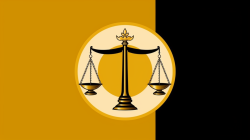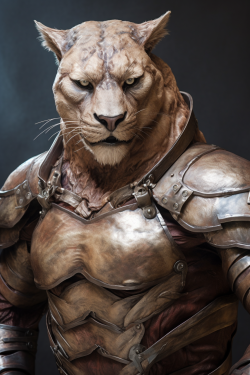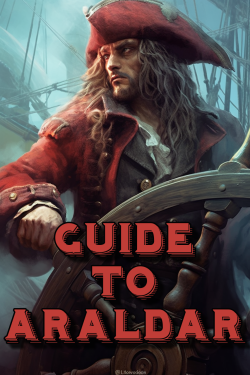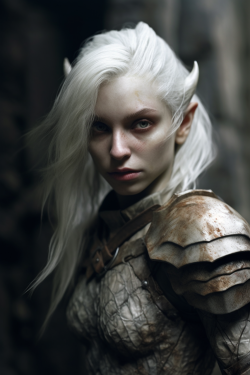Guide to Otan
| Genre | Medieval Fantasy (with quirks) |
|---|---|
| Inhabitants | Humans, Aelfes, Dweorges, Grendel, Ungir, etc. |
| Universe | Will to Power Fantasy Novel Series |
| Military | Otan militaries |
|---|---|
| Language | Otani languages |
| Botany | Otani botany |
To its residents, Otan is a world bounded only by the sky. To them, Otan is the entire world. To an observer of the globe, however, Otan is a northern continent, a land mass of some three million square kilometers. This is a mixture of a variety of climates and landscapes ranging from ice-covered mountains to desert, grassy plains to jungle, deciduous forest to barren tundra.
The geography of the globe, which residents also refer to as Otan is made up of a set of continents separated by ocean. The continent of Otan is predominantly confined to a single land mass with the exception of a few small islands, most of which make up the western nation of Araldar. As of the year 261 IM, no Otani soul has been witness to lands outside of their home continent.
Humans of Otan[edit]
Humans exist in every known corner of Otan. Save for places with conditions too extreme to sustain human life, humans can be found everywhere else. Humans are extremely likely to speak the common Otani language, which is spoken nearly to the exclusion of other languages in the six nation-states populated predominantly by humans.
Republic of Batis[edit]

Batis, the westernmost nation of Otan is also its only true democracy. First Citizen Joseph Sawdageri is the current elected head of state. Batis and the Batistiktar people have lived in an economy of abundance, thanks to the excellent soil and ideal conditions for the production of food.
Matriarchy of Karazalik[edit]

Karazalik is the southern neighbor to Ontustik. It has a holistic culture in which its politics and religion are interwoven into every aspect of life. Lines are blurred between religious and political leaders. The blend has resulted in a largely matriarchal society, with surprisingly little political in-fighting. The capital city of Karazalik is its port city of Ademi.
Caliphate of Ontustik[edit]

The Caliphate of Ontustik is the southern nation of Otan and controlled by a matriarchal religious aristocracy. The acolytes of Aspan, the sky god, form the country's government, appointing a hierarchy to run each of the country's settlements. Ultimate power resides in The Ninth Lotus, High Priestess of Aspan, who rules the country from her temple in the capital of Anar.
Tsardom of Ortalyk[edit]

The Tsardom of Ortalyk is the centre-most state of Otan. The government is a tsarist autocracy under the current leader Tsar Batil Zhurek, the nation's largely benevolent ruler.
The people of Ortalyk, though primarily of Ortalykshilar descent, are an amalgamation of all the human people of Otan. Further, Ortalyk boasts the largest populations of mixed-strain peoples, such as half-orcs, half-elves, and other half-strains. It has evolved, becoming the 'de facto melting pot of Otan.
Sigis Empire[edit]

Sigis, the easternmost state of Otan is also a feudal monarchy led by Emperor Judiric of Temir, the current regent of the Iron Dynasty. The people of Sigis, the Sigis Turgindari have a reputation for trading valuable and rare commodities from gems to fine crafts.
Kingdom of Soltustik[edit]

Soltustik, the northernmost state is a feudal democracy. Led by Queen Kara Muz, he rules with a cold and iron hand from his self-titled capital of Muz. The people of Soltustik seem to thrive in cold weather. This nation-state is also home to many non-humans who also tend to prefer snow and ice to warmer terrain.
Non-Human Nations[edit]
The Council of Aelfgarad[edit]

Aelfgarad Home of the Friggaelfes and most of the Dunaelfes.
Friggaelfes[edit]

The Friggaelf (pronounced Frig-alf) is the predominant race and culture in the country of Ælfgarad. They were once intermixed with their Wodaelf and Dunaelf cousins until rifts in their sense of the aesthetic came to the forefront of their culture and politics. The Friggaelfes believe that the only true aesthetic is found in art, which should be sought and praised above all things.
Friggaelfes create the most beautiful and amazing architecture on Otan, the most beautiful ships and vehicles, and the most beautiful clothing and garments, rivaling that of even the Sigis Empire. Eschewing their Wodaelf cousins, they left Aelfwode and moved west to create the new country of Aelfgarad, where they could practice their artistic endeavors (many of which involved the cutting of trees) in peace.
The Kingdom of Aelfwode[edit]

Aelfwode Home of the Wood Wodaelfes.
Wodaelfes[edit]

The Wodaelf (pronounced Woah-dalf) are, not surprisingly, the preeminent race and culture found in Aelfwode. They were, most believe, the only variety of Aelf to exist. Their love for Woden and his creation extended to the forests and nature in which they lived. A common Wodaelf saying is, "Nothing can be more beautiful than a tree."
While this is very possibly true, as trees do possess a powerful aesthetic, a time came when not all Aelfes agreed. Friendly disagreements became heated arguments, which grew into political upheaval and even in some cases, war. The Wodaelfes eventually bade their art-loving cousins leave the forests of Aelfwode and put an end to these powerful disagreements. The new tribes dedicated themselves to Frigg and the arts, moving west to find peace.
The Altinqor Confederation[edit]

Altinqor is a country populated by the draconic-blooded Aydahar and every manner of dragon on Otan. The country is made up of ten regions, five of which roughly represent a chromatic dragon (red, blue, etc.) and five that represent metallic dragons (gold, silver, etc.). About 80% of the Aydahar people bear the strong features and colors of their dragon progenitors. The rest of the country is made up of mixed colors, and features of varied and interesting combinations.
Aydahar[edit]

The Aydahar are a race of draconic-infused humans originally of human origin, but whose ancestors and sometimes parents are of a draconic lineage. When it was learned that dragons and humans could produce offspring, the races of the Aydahar and the similarly draconic-blooded Ungir soon came into being. The Aydahar eventually banished their Ungir cousins from their lands, choosing to cohabit and comingle more readily with full-blooded dragons... at least those dragons who are gregarious enough to put up with other creatures.
Because of the numerous varieties of dragon, there are also numerous varieties of Aydahar. At least a dozen known variants of the Aydahar race exist on Otan, most of which are identified by the nature of their draconic ancestors.
The League of Dweorgen Miners[edit]

The League of Dweorgen Miners is a country with more residents underground than above ground. Well rewarded are those tasked to stay above ground to grow crops and raise livestock to supply the ones below.
Dweorgs[edit]

The Dweorgs are a race with a predilection toward mining. A short conversation with a Dweorg will reveal their life's philosophy, which can be reduced to a simple motto; "Treasures await beneath." Genetic and cultural compulsions aside, this motto alone tempts the Dweorgs to dig.
The Garis Triumvirate[edit]

The Garis Triumvirate is the only country under Garis control and exclusively governed by the Garis. They possess one of the most unusual governmental systems in all of Otan. Their tribal nation, naturally divided them into three factions, features one seeking external conquest, one seeking internal and external peace, while the last seeks only to administer, regardless of which of the other two factions has the most sway. This latter faction, sometimes referred to as the Garis Administrati are made up nearly entirely of Akimsilik.
Garis[edit]

Garis legend speaks of a time when the Garis did not inhabit Otan, but travelled through the heavens. Always looking to the stars, they have survived and even thrived on Otan, but never feel at home. It seems that endless internal conflict and factional disputes will keep them grounded indefinitely.
Garis Variants[edit]
There are three distinct variant races of Garis which is most readily noted by the shape of their muzzles. The peace-loving Beybitsilik variants have the shortest snouts of the race with a pronounced lower jaw resembling that of a hyena. The war-mongering Ustemdik have more lupine features with a shorter snout and a menacing visage. The orderly Akimsilik have more vulpine features, with a medium-sized snout and less pronounced jaw.
Maercland[edit]

Maercland sits on the northern coast, with the Ungirsi Federation on their southern border and the nation of Soltustik to the west.
Grendel[edit]

The Grendel have little patience for human politics and have set out on several occasions to destroy all that is human. Encouraged by the half-human, Half-Grendel warlock Zoranthar Zhanat, the Grendel made war on Ortalyk and Soltustik with varying degrees of success. Only the Accord of Kala Astanals stayed their hands from seeking more human blood.
Shuwalu[edit]

The Brotherhood of Shuwalu is surrounded by sea and borders the human nation of Soltustik to the southwest. Shuwalu and Soltustik have not had border clashes since the Concord of Kala Astanals and the two countries largely keep to themselves.
Tozakh[edit]
The Tozakh were simply a variety of humans who had taken to sprout antlers. Speculation and rumors soon followed and they were labeled with the epithet Tozakh. Having fewer numbers than their otherwise unaltered human tormentors, they embraced the Tozakh epithet as their racial designation. The thrust behind this decision is that the Tozakh name tends to inspire fear before it inspires derision, giving their people a survival advantage.
Kuulik[edit]
The Kuulik love a bargain and their location is a great place for bargaining. Situated between human and grendel territory, they have a knack for serving both sides during times of war and peace alike.
The Kuulik Trade Company[edit]

The Kuulik Trade Company is a peninsula and set of islands situated between the human nation of Ortalyk to the south and the grendel occupied nation of Maercland to the north.
Misiq[edit]
The Misiq.
Tosenis[edit]

The Misiq inhabit a loosely defined country they call Tosenis, which lies entirely in what the Batis nation thinks of as their country. ....
Qurilissi[edit]
The Qurilissi, better known to some as the "builders" appear in the lore of most of the religions of Otan. Their role was to help create the world by fashioning the mountains and lakes, forests and ice, and almost everything that there is on Otan to this very day. While their existence is considered historical or even fictional by most, exactly four builders are known to currently exist on Otan; one of each variety.
Kingdom of Kiskentay[edit]

The Protectorate of Kiskentay is a coalition of humanoids both smaller in stature and in number than their taller human cousins.
Sweardaelfes[edit]
The Sweardaelf (pronounced Swar-dalf) are a diminutive race who live mainly in the southwestern Kingdom of Kiskentay. Their societal and social mores differ little from their larger human counterparts, though they do economize on materials in that they can make most things much more inexpensively than humans because they can make them half-sized.
The Ungirsi Federation[edit]

Populated by more than 1.6 million of the diminutive Ungir race, the Ungir currently control a single nation on the Otan continent; dubbed the Ungirsi Federation.
Ungir[edit]

The Ungir are a humanoid race or human variant with several variations that alter its appearance from humans. These include a diminutive size, leathery skin, a long and pointed proboscis and jawline, taloned feet and a prehensile tail. Like the Aydahar they possess draconic blood and share a language and heritage with dragons.
Multi-strain Diaspora[edit]
Multi-strain variants among the people of Otan are increasingly numerous. Individuals whose genetics are made up of two or more of the principal genetic strains can find themselves in awkward circumstances. They can find themselves feeling that they neither belong to the culture and heritage of one group nor the other. Multi-strain individuals often seek refuge in two safe places in Otan where the outcasts are the majority. These places include the country of Araldar and the ungoverned territories known as the Free States.
Protectorate of Araldar[edit]

Araldar is an island nation, consisting of an archipelago off the coast of Otan. The country's political power is maintained via its massive navy, which in turn relies on constant recruiting. Anyone able to push a mop will find themselves working in the Araldar navy. This makes it an ideal, if not perfect, escape for multi-race persons who immediately feel acceptance within their ranks... or at the very least, a lack of hostility.
The government is controlled by a naval stratocracy, with the head of state being of the rank of admiral. Jonas Draktar is the current state leader holding the title of Lord Admiral. When he's not on the high seas, runs the state from the port city capitol of Jagalik.
The Free States[edit]

The Free States are a collection of independent city-states and are often sought as a place of refuge for multi-strain people who never achieve a sense of belonging with either their human or non-human kind. Apart from multi-strain individuals, one can expect to find political and religious dissenters of every stripe in the Free States.
Jalinjeri Protectorate[edit]

Founded by the arch-mage Hedgewind Jalinbeti, Jalinjeri, is a new nation in central Otan formed from the former Ortalyk Kiywar Territory and portions of northern Karazalik. The people of Jalinjeri, though largely of Ortalykshilar (human) descent, are an amalgamation of several Otan races.
Multi-Strain Examples[edit]
While most of these examples the other half of the genetic line is human, Otan is also home to various other mixes such as Grendel/Ungir, Aydahar/Garis, and other individuals who are hard to imagine.
-
 An Half-Ælf
An Half-Ælf -
 An Half-Aydahar
An Half-Aydahar -
 An Half-Dweorg
An Half-Dweorg -
 An Half-Garis
An Half-Garis -
 An Half-Grendel
An Half-Grendel -
 An Half-Kuulik
An Half-Kuulik -
 An Half-Misik
An Half-Misik -
 An Half-Ungir
An Half-Ungir
The Religions of Otan[edit]
There are several Otani religions, generally divided along racial lines, however, humans seem to possess a knack for creating new religions and the various human clergies compete for the hearts and souls of humans and non-humans alike.
Aspanism[edit]

Aspanism is a form of sky worship. The major deities of the religion, however, do not make up the bulk of the clergy. Rather the Aspanists worship the goddess Suu. Aspanism is not a bookish religion and all the tenets and beliefs are passed down via oral tradition.
Baksism[edit]
Baksism is an animistic religion in which any creature, or geographic feature such as a river or mountain might be considered to possess a divine soul. The central figure of this religion is the creator, Ana, who gave birth to Otan. She then gave birth to seven children or Baksi, each with a specific role, to watch over the people and other creatures of the land.
Cult of Personality[edit]
The Cult of Personality is not a single religion, but a compilation of many religions, some so obscure as to have little more than a single adherent. Most of the cultists, adherents, worshippers, warlocks, druids, or others who follow this faith tend to fixate on a single being, a form of lusus naturae, part human, part otherworldly creature. Individual personas in the cult include such figures as Aeski and Bloncamann.
Janyarism[edit]

Janyarism is an animistic religion practiced nearly exclusively in the Republic of Batis and neighboring areas that trade with that country. Each of theJanyarist gods manifest themselves as anthropomorphized animals common to the region.
Mujitism[edit]

Mujitism is another animistic religion practiced nearly exclusively in Araldar and in the nearby coastal areas of countries that trade with the Araldar.
Wodenism[edit]
Wodenism is a pantheistic religion that involves the worship of Woden and a series of other and largely less powerful gods. The philosophy and tenets of Wodenism are thoroughly described in the Book of Woden.
The Factions of Otan[edit]
IN addition to the many world governments who are themselves political factions, Otan is rife with non-governmental factions. These may exist for political or religious reasons. Some exist to further a particular craft or skill. Factional leaders may be content to work locally, while others seek to spread their faction worldwide.
Some examples of factions on Otan include:
- Council of Nine - a group of three humans and six unknown spellcasters who formed a concord to bring peace to Otan.
- Temple of Woden - a religious sect dedicated to spreading the word of the Book of Woden.
A Brief History of Otan[edit]
The Otan Calendar[edit]
The Otan calendar is the measure and passage of time in Otan calculated by days measuring one rotation of the planet (roughly 24 hours). A year is measured as one rotation of the sun, typically 367 days. The days are divided into 12 months of 30 days each followed by a six or seven-day Holy Week.
Before Erasure[edit]
Before Erasure or BE refers to the historical period before written history or any form of recalled memory. It is not known whether this loss of memory was a series of events or one cataclysmic event, however, it is known throughout Otan as the Great Erasure.
In Memoriam[edit]
In Memoriam sometimes abbreviated to IM is the current year in Otan. The year 1 IM indicates the first moment of recorded history on Otan. Sorcerers and philosophers alike have been unable to divine any information about the period before 1 IM. People existed in this year, some of them of advanced age, but no recorded memories or histories exist before this time. Thousands of years of history can certainly be inferred from year 1 IM, but not a single written record or recalled memory of beasts who lived before that time has ever been made known.
| Copyright © 2021-2025 by Robyn Blaber and Will to Power Games. All rights reserved. Content on this website may not be reproduced without written permission of the copyright owner. |


































